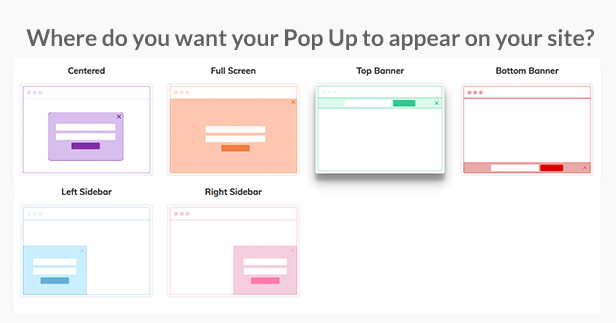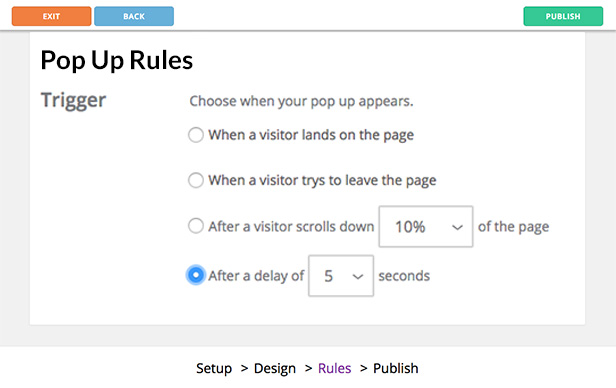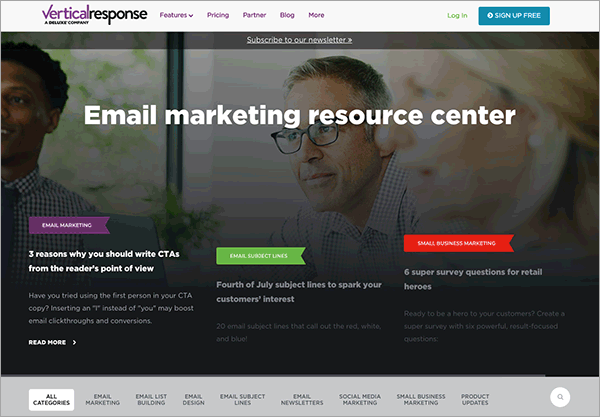
Using VerticalResponse for Effective Pop-Up Forms
Using VerticalResponse for Effective Pop-Up Forms
In the sprawling digital landscape where the average online user is bombarded with countless messages, one question remains at the forefront of any email marketer’s mind: how do I cut through the noise and capture my audience’s attention? The answer, for many, is pop-up forms. Designed to nudge visitors into taking action, these diminutive windows are a powerful tool in the email marketer’s arsenal. But what separates an effective pop-up form from an annoying one? And how do you ensure that your pop-ups resonate with your audience, inciting not only action but genuine engagement? This in-depth post is tailored to email marketers looking to optimize their email sign-up strategy, specifically focusing on the potential unlocked by pop-up forms.
Introduction to Email Marketing
At the heart of a successful pop-up form strategy lies the centrality of email marketing. Email remains one of the most effective channels for communication, with an average ROI of $42 for every dollar spent. But it’s not just about the financial returns. Email marketing forms a personal, direct line of contact with your audience, allowing for a level of engagement and brand building that social media can’t replicate. This personalization can be further enhanced through the strategic use of pop-up forms, which can help grow your list and, in turn, supercharge the effectiveness of your email campaigns.
Email marketers today are in the business of crafting experiences. Pop-up forms, if judiciously and creatively implemented, can elevate these experiences, fostering a sense of community and anticipation with each new email that lands in a subscriber’s inbox.
Why Pop-Up Forms Are Effective
The interruptive nature of pop-up forms, aligned with a well-crafted value proposition, can be highly effective in capturing leads. Statistical evidence abounds with success stories that unequivocally demonstrate how pop-up forms have dramatically increased subscription rates for leading brands across various industries.
Despite the polarizing reputation pop-ups might carry when done with finesse, they offer tangible results:
- Increased Conversions: a well-timed and relevant pop-up can convert nearly 8% of visitors, according to a Sumo study.
- Reduced Cart Abandonment: Retailers have seen a remarkable fall in cart abandonment rates by reminding visitors through pop-ups about items left behind.
- Improved User Engagement: The right pop-up at the right moment can be engaging, informative, and even entertaining, earning you a loyal subscriber.
It’s clear that when used strategically, pop-up forms can be an invaluable asset in your email marketing endeavors.
Designing Effective Pop-Up Forms
Crafting a pop-up form that not only captures attention but also encourages action is as much an art as it is a science. Here’s how you can design pop-up forms that convert.
Compelling Call-to-Actions (CTA)
Your CTA is the linchpin of your pop-up form. It should be crystal clear, action-oriented, and explicitly state the value your subscriber will receive.
Attractive Design
Humans are visual creatures, and aesthetics matter. Ensure that the design of your pop-up is in line with your brand identity yet distinct enough to stand out.
Mobile Optimization
With most internet usage now happening over smartphones, your pop-up forms must be optimized for mobile. This includes using responsive design and ensuring any animation or movement doesn’t affect usability.
Best Practices for Timing and Placement
Pop-up forms should enhance the user experience, not detract from it. Consider the following best practices for timing and placement.
Timing Is Key
The timing of your pop-up can make or break the user’s experience. Avoid pop-ups that appear immediately upon page load, as this can be off-putting. Instead, use triggers like exit-intent or time on page to show your pop-up when the user is more likely to engage.
Placement Makes a Difference
The actual placement of your pop-up on the screen can impact whether it’s seen as helpful or intrusive. Test different locations, but typically, the middle of the screen or the bottom-right corner are good starting points.
Integrating with Email Campaigns
Once you’ve optimized your pop-up forms for design, timing, and placement, it’s important to integrate the data you collect into your email marketing campaigns efficiently.
Seamless Data Integration
Ensure that the data collected from pop-up forms seamlessly feeds into your email marketing platform. This usually involves using APIs or third-party integration tools to maintain a synchronized email list.
Segmentation for Personalization
Effective email campaigns are highly targeted. Use the data from pop-up forms to segment your email list and deliver personalized content that resonates with each group.
Case Study: Successful Pop-Up Form Implementation
To truly understand the potential of pop-up forms, consider a case study. Discussing a real-world example can provide actionable insights and inspiration for your own strategy.
Lexington Avenue Clothing, a boutique fashion brand, tripled its email subscriber rate by implementing a pop-up form that offered a 10% discount in exchange for signing up. By A/B testing different designs and CTAs, the brand found a winning combination that not only attracted subscribers but also converted them into paying customers.
Leveraging VerticalResponse for Pop-Up Forms
For an in-depth look at how to use pop-up forms within your email marketing platform, it’s essential to explore available tools and resources. VerticalResponse offers a comprehensive solution for creating and managing pop-up forms, enhancing your subscriber acquisition efforts.
Creation and Customization
With VerticalResponse, you can easily customize your pop-up forms to reflect your brand and showcase your unique value.
Trigger Mechanisms
Use a variety of triggers, including scroll-depth or user behavior, to ensure your pop-up forms appear at the opportune moment.
Integration with Email Campaigns
VerticalResponse provides seamless integration between pop-up forms and your email marketing campaigns. This means the data you collect is automatically routed to the right segment of your email list.
Conclusion
Pop-up forms, when thoughtfully designed and strategically utilized, can be a game-changer in your email marketing efforts. They offer a direct and effective means of growing your email list while also engaging your website visitors. Remember that with great power comes great responsibility. It’s essential to balance the rich opportunities of pop-up forms with a user-focused approach that respects and enhances the browsing experience.
To truly harness the power of pop-up forms, engage in continuous testing and optimization. Monitor performance metrics closely, and be willing to adapt your strategy based on the feedback you receive. The path to pop-up form mastery may be an iterative one, but the results will speak for themselves. In the meantime, consider exploring VerticalResponse’s support article on pop-up forms for a detailed tutorial on how to implement these tips in practice.
Email marketing, bolstered by the judicious use of pop-up forms, can be a dynamic and personalized conduit to your audience. Invest the time in perfecting this component of your strategy, and you may find that your pop-up forms are not a mere point of enrollment, but a portal to your audience’s hearts and minds.
Are you interested in finding out more? Browse the rest of our blog for other marketing tips. If you’re ready to create your first email, survey, sign-up form, or landing page then register for a free trial to get the tools you need to build powerful marketing campaigns!
© 2024, Vertical Response. All rights reserved.






